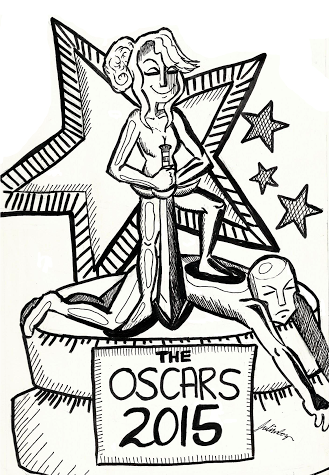Elizabeth McClellan, a freshman majoring in journalism, is a Hatchet opinions writer.

I was raised watching Disney princesses – and if you grew up in the 90’s, you may have been, too.
So when as a young woman I finally learned about the underlying sexism in Disney’s animated films, I felt disillusioned and betrayed. But the revelation opened my eyes to the fact that strong sexist themes are prevalent in all movies.
The filmmaking industry is in dire need of a greater number and variety of female characters, along with better representation of complex women.
As college students, we can get the ball rolling. Most of us at GW are in the 18-to-25 age bracket, and our demographic is crucial to the film industry’s financial success. That means we have consumer power, so it’s important that we use it by going to see movies that feature strong, intelligent female characters.
And everyone knows we’re the most politically active school in the country, with multiple salient issues on our radar. Feminist activism, too, has been brewing on campus lately in light of both national and University-focused discussions about sexual assault, so it seems natural for us to add this issue to our agenda.
You might already head to the movies regularly. But by being selective in your movie choices and picking films that empower women, you can effect change.
Films that come out this fall meet the eligibility deadline for spring awards season. They’re Oscar bait: high-quality and released at this time in an attempt to win acclaim. The same movies that gain popularity (say, those that bring out young people) grab the Academy’s attention.
If you haven’t taken a critical look at feature films like I have, you might not immediately see how much is at stake. The misrepresentation of women in movies is a rampant problem, but most people hardly notice it.
Women in movies are more than twice as likely as men to be sexualized, shown naked or dressed in risqué clothing, but often, the issue is masked. “Tomb Raider’s” Lara Croft, for example, is the film’s protagonist and a powerful female, but is ultimately sexualized for the benefit of male viewers.
Caroline Heldman, a political science professor at Occidental College, calls these characters “the fighting fuck toys.” At first glance they may seem powerful, but ultimately, they’re still objectified.
So what needs to be done? We definitely need more Katnisses and Hermiones – powerful, complex female characters. Between 2010 and 2013, only 14.8 percent of doctors, 13.9 percent of executives and 9.1 percent of lawyers depicted in movies were female, which is disheartening to say the least.
This is where we come in: by sending a message to Hollywood through our ticket purchases. To the untrained eye, it can be hard to spot a movie that pushes back against stereotypes and provides female role models.
But luckily, we have the Bechdel test – a set of criteria to consider when heading to the theater. A movie passes the test if it includes at least two female characters, they talk to each other at some point during the film and their conversation is about something other than a man. Only four of 2014’s nine Oscar nominated films passed the Bechdel test.
This year, some movies to look out for include “Camp X-Ray,” featuring Kristen Stewart as a soldier working at Guantanamo Bay, “Wild,” with Reese Witherspoon as a hiker on a brave and dangerous adventure, and “Into the Woods,” Disney’s latest, starring the likes of Anna Kendrick, Emily Blunt and Meryl Streep.
Media are part of an incredibly influential industry, and, right now, the gender gap in film is a reflection of the sexism prevalent in our society. Young girls are going to the theater only to discover that their archetypes include victim, romantic interest, sex object, sidekick and secretary.
As politically active college students, we can and should push Hollywood to close this gap.




